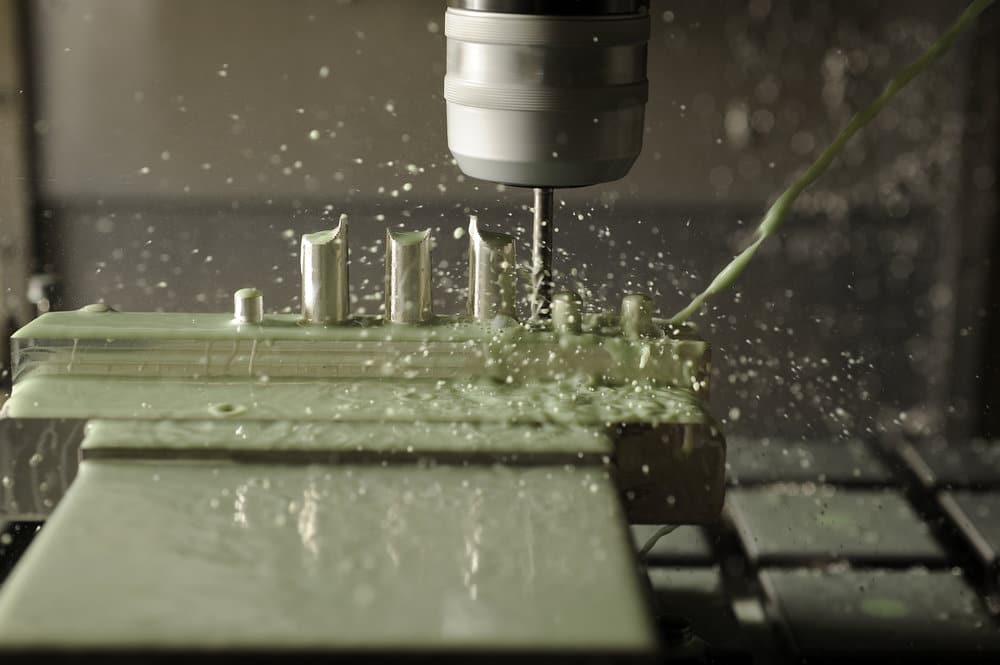While some failures can lead to new discoveries and opportunities, “success challenged development” often only succeeds in consuming valuable time and budget. Errors caught early in the process such as during prototyping, can be quick and inexpensive to address. But, errors discovered further downstream are usually more challenging to remedy. And, time lost to errors deep in the development cycle is not only more difficult to recover, but also very costly. Obviously, the solution is to identify challenges early in the design process—often easier said than done.
FINDING ERRORS EARLY SAVES TIME AND MONEY.
Plastic components are also not immune to design challenges and require extensive testing. Life cycling, repeated actuation, drop testing, safety, ease of assembly, serviceability, manufacturability, aesthetics, ergonomics are critical factors to consider. To have real confidence that plastic parts will function as designed, actual plastic parts should be used in testing. SLA (stereolithography), cast urethane, and machined parts can approximate molded plastic characteristics, but to base functional testing on them is risky. Fortunately, technological advances in Rapid Injection Mold Tooling now provide designers with options that produce molded plastic parts to compete with rapid prototyping methods in price and delivery. Rapid Tooling is defined many ways. It can be a simple CNC machined-only tool or an actual plastic injection mold. If the requirement is to mirror high-volume tooling and production level part quality, then it is critical to choose the right tooling process in the beginning.
CHOOSE THE BEST RAPID TOOLING PROCESS FOR YOUR PROJECT.
Remember, the goal is to identify design challenges early, so before choosing a rapid tooling partner, consider the following items and ask the right questions:

1. DOES YOUR MATERIAL SPECIFICATION FIT YOUR APPLICATION?
Not everyone is a materials expert especially when it comes to plastic resins. The plastics industry changes daily with new developments and advances. However, there are usually one or two materials that will fit your needs better than others. Additionally, consider that custom blended materials will often carry a long lead time and higher price than an off the shelf stock color material. If your rapid tooling partner has a good knowledge base and experience in product development, consult with them on materials.
2. WHERE SHOULD PLASTIC FLOW INTO THE PART (I.E. GATING TECHNIQUES)?
Few part designers give gating much thought and leave the type and location to the tooling vendor. Depending on their process, many tooling vendors will specify the type and location of the gate they will use. Or, they may not give you a choice and simply put it where it is easiest for them or their process. Consider cosmetic surfaces, pivot points, sealing surfaces, bearing or lens seats, touch points, and handle areas. Placing a gate in any of these areas could render the molded part unusable. Rapid tooling vendors usually see only individual components of product assemblies and often have no idea what they may be used for. Discuss gating with your tooling supplier especially if the part from the rapid tool is supposed to mirror the one from the production tooling.
3. INCLUDE DRAFT ON THE PART DESIGNS OR SPECIFY IT AT KICK-OFF.
If you are unsure of what draft requirements to put where to choose a tooling partner that understands part optimization and has the engineering expertise to add draft if needed. Many rapid tooling vendors will not accept a project if the part files do not include appropriate draft. Also, if your design requires zero drafts in certain areas, be sure to convey this at the beginning of the project. Keep in mind that well-drafted part designs will normally require less toolmaking time and will produce faster cycle times at the molding press.
4. THINK ABOUT PART TEXTURE AND FINISH.
Texturing and polishing cannot be an afterthought and must be given consideration in both the part and tool design. Most texture specifications have minimum draft requirements that must be met. Smooth surfaces, while not as critical from a draft standpoint, may require more labor to polish and can add cost and time. Also, highly polished surfaces tend to reveal more cosmetic issues on a plastic part such as witness lines, sink marks, flow lines, etc.
5. OFFER REALISTIC PART QUANTITIES.
Rapid tooling processes are built for speed and usually offer different options depending on the customer’s application. Part quantity can have a dramatic effect on the type of tooling produced. If you estimate you will only need 100 parts and no more, the rapid tooling vendor is going to build a tool that is capable of producing at least 100 pieces in the quickest, most cost effective manner possible. Later, if you determine that you need 50,000 more parts, the tool may be capable of producing that quantity, but it may not maximize material usage, have a slow cycle time, and produce a high part cost. If you are unsure of total plastic part quantities, choose a rapid tooling process that offers flexibility for production ramp-ups.
6. ESTABLISH EXPECTATIONS AND THE TIMELINE.
Many a project has missed its due date because upfront expectations were not clearly set. Most rapid tooling vendors will quote a project based solely on the information provided in the RFQ. If after kick-off, the part file changes, the material spec is changed, a texture is now required, or high tolerances are now required, the tooling process comes to a halt while these changes are addressed. Many rapid tooling suppliers will ask appropriate questions in the beginning to make sure these delays are avoided, but some may not.
Catalyst Product Development is passionate about making sure your product design gives you a competitive edge. Visit our website to view examples of our work or to find out more about how Rapid Tooling can help your next project.
